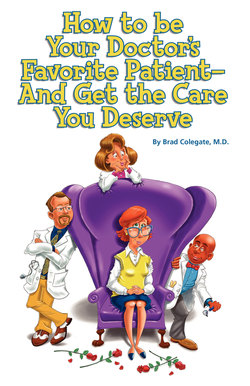Читать книгу How to be Your Doctor’s Favorite Patient - David Claytor - Страница 3
На сайте Литреса книга снята с продажи.
Introduction
Оглавление“If you’ve got your health, you’ve got everything,” it’s been said, and we, as a nation, are eagerly seeking to fulfill that dictum. We join health clubs, take yoga classes, and buy vitamin supplements, at a yearly cost of billions of dollars, but we often overlook one of the most important links to good health: our relationships with our physicians. But improving these relationships can help us achieve better health–and there’s no additional office charge!
On average, we visit a physician nearly three times per year, for a whopping total of 800 million office visits per year. That might make you think that Americans love seeing their doctors–but it’s often a love-hate relationship. More and more people are voicing their dissatisfaction with the traditional medical system and turning to alternative therapies such as acupuncture, homeopathy, and chiropractic. Still, most medical care takes place in a traditional office setting, and patients themselves have the power to increase their level of satisfaction with their care providers–and their level of health–by following some simple suggestions on what to do (and not to do) in the doctor’s office.
We have bought millions of books to help us get along better with our spouses, children, and in-laws, and yet very little has been written about the doctor-patient relationship–the foundation for receiving good care–or the ingredients that are needed to make this relationship work. Relationships are largely abstract and emotional, but the behaviors they involve can be defined and illustrated. Bear in mind that the doctor-patient relationship involves two human beings–(yes, doctors are human, too)–and that getting what you want out of any relationship involves responsibilities and seeing the other person’s point of view.
We’ve learned that if we don’t treat our spouses well, we’re not even going to get to first base when it comes to getting the love we want; respect, openness, and affection will make us winners at home. Likewise, if we have difficulties in the way we deal with our doctors, those difficulties will become roadblocks to getting the care we deserve. The premise of this book is that you will be better served, happier, and healthier if you get along well with your doctor, perhaps more so than if you receive any particular test, drug, or treatment.
Using colorful vignettes drawn from my years of experience in primary care (but using fictional patients and physicians), this book illustrates many of the challenges that test the doctor-patient relationship. Each scene will be followed by an analysis and advice as to what could be done to improve the situation. By following these guidelines, you can become “your doctor’s favorite patient”–and get the care you deserve!
